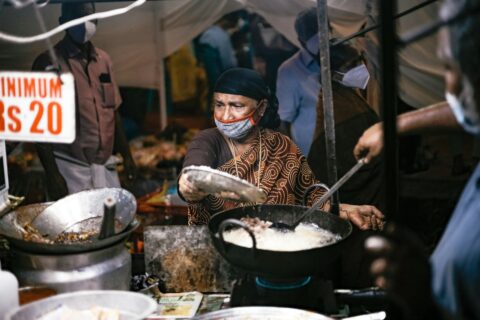Balancing Competition Law: Supreme Court’s Verdict in Schott Glass Case

In a significant judgment delivered on May 13, 2025, the Supreme Court of India dismissed the appeals filed by the Competition Commission of India (CCI) and Kapoor Glass India Pvt. Ltd., upholding the decision of the Competition Appellate Tribunal (COMPAT) in favour of Schott Glass India Private Limited. The case, which revolved around allegations of abuse of dominant position under the Competition Act, 2002, has set a crucial precedent for future competition law cases in India.
Table of Contents
Background of the Case
The legal battle began in 2010 when Kapoor Glass India Pvt. Ltd. (Kapoor Glass), a converter of glass tubing into pharmaceutical containers, filed a complaint under Section 19 of the Competition Act, 2002, against Schott Glass India Pvt. Ltd. (Schott India). Kapoor Glass alleged that Schott India, the principal domestic manufacturer of neutral USP-I borosilicate glass tubing, had abused its dominant position by offering exclusionary volume-based discounts, imposing discriminatory contractual terms, and occasionally refusing supply. The Competition Commission of India (CCI) formed a prima facie opinion and directed an investigation by the Director General (DG).
The DG’s report concluded that Schott India had violated Section 4 of the Competition Act, 2002. Following a hearing, the CCI levied a penalty of approximately Rs 5.66 crores (4% of Schott India’s average turnover for three years) and issued a cease-and-desist order against discriminatory practices. Schott India appealed to the Competition Appellate Tribunal (COMPAT), which allowed the appeal, annulled the penalty, and held that the evidence did not establish any abuse of dominant position. Kapoor Glass also appealed to COMPAT for broader relief, but its appeal was dismissed with costs of ₹1,00,000.
Civil Appeal to the Supreme Court
Dissatisfied with COMPAT’s decision, the CCI and Kapoor Glass appealed to the Supreme Court, seeking revival of the original CCI order and challenging COMPAT’s decision. The Supreme Court examined several key issues, including whether Schott India’s target-discount scheme amounted to discriminatory or exclusionary pricing, whether the functional-discount scheme imposed unfair or discriminatory conditions, and whether the Long-Term Tubing Supply Agreement (LTTSA) with Schott Kaisha produced a margin squeeze.
Rival Contentions
The CCI and Kapoor Glass argued that Schott India’s dominant position and abusive practices were evident. They contended that the target rebates coerced loyalty and tied clear and amber tubes, while the functional rebates and LTTSA foreclosed competition. They also argued that the aggregation of clear and amber tubing for rebates constituted tying, and that selective supply curtailments denied market access to certain converters. Schott India, on the other hand, argued that the evidence relied on untested statements, vitiating the case. They maintained that volume rebates were legitimate and non-discriminatory, the LTTSA was objectively justified and not exclusionary, functional rebates covered additional services, not loyalty, and no margin squeeze was possible or shown.
Legal Provisions and Judgments Relied Upon
The Supreme Court relied on several legal provisions and judgments, including Section 4 of the Competition Act, 2002, which prohibits abuse of dominant position, and Section 19(4) of the Act, which outlines factors to be considered in determining dominance. The Court also cited Section 36(2) of the Act, which incorporates the Code of Civil Procedure’s guarantees, including the right to cross-examination, and Regulation 41(5) of the 2009 General Regulations, which obliges the DG or the CCI to grant cross-examination when necessary. Key case laws relied upon included Excel Crop Care Ltd. v. CCI, CCI v. Steel Authority of India Ltd., and Cadila Healthcare Ltd. v. CCI.
Analysis of the Court
The Supreme Court found that Schott India’s target-discount scheme was neutral, volume-based, and objectively justified, with no evidence of exclusionary effects. The functional-discount scheme was held to be uniformly available and objectively justified, with no foreclosure or capacity restriction observed. The Court concluded that Schott India did not operate downstream, no margin squeeze occurred, and no foreclosure effects were demonstrated. It also determined that NGA and NGC tubes were not independent products and no coercion or foreclosure was proven. The Court emphasized that an effects-based analysis is essential under Section 4 of the Act, and no appreciable adverse effect on competition was shown. Finally, the Court noted that the denial of cross-examination was a procedural lapse that could have invalidated the findings.
Conclusion
The Supreme Court dismissed the appeals and upheld COMPAT’s decision, holding that Schott India’s practices did not amount to abuse of dominant position under the Competition Act, 2002. The judgment underscores the importance of an effects-based analysis and procedural fairness in competition law enforcement. It highlights that mere size or success should not be treated as an offense under competition law. The decision is a significant milestone, emphasizing the need for a balanced approach to competition law enforcement, ensuring that regulation rewards scale and intervenes only when genuine competitive harm is demonstrated. This case serves as a crucial precedent for future competition law disputes in India, reinforcing the principles of fair competition and legal certainty.
Case Citation
Competition Commission of India v. Schott Glass India Pvt. Ltd.
Civil Appeal No. 5843 of 2014
Supreme Court of India
Judgment Date: May 13, 2025
For further details write to contact@indialaw.in
By entering the email address you agree to our Privacy Policy.



